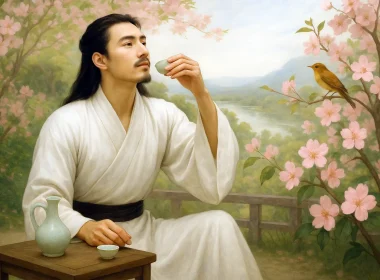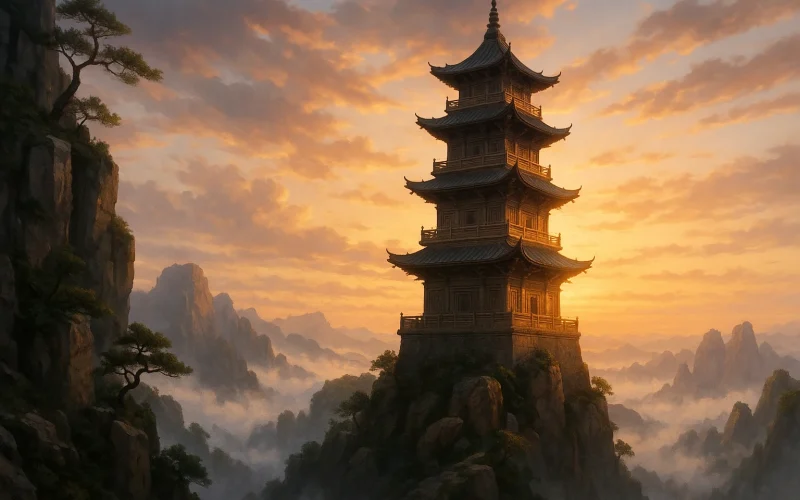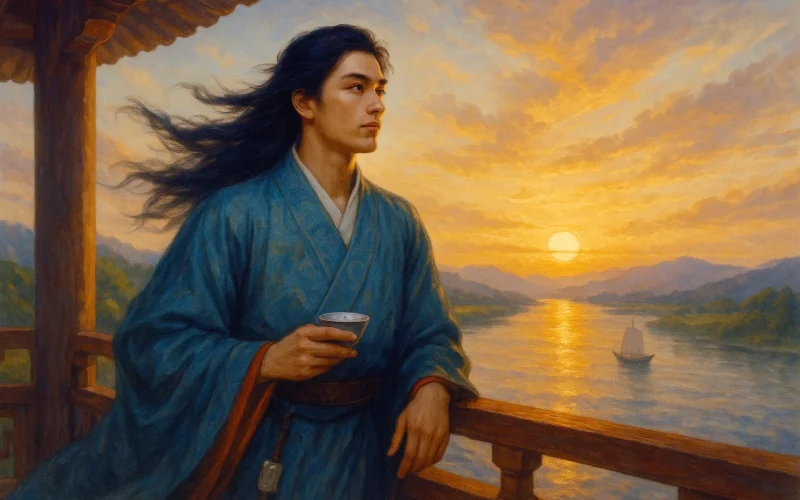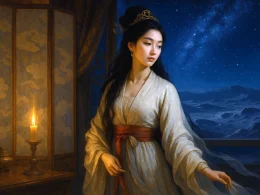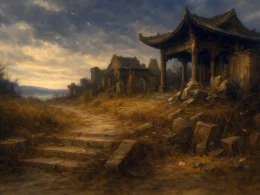The pagoda, rising abruptly from earth,
Reaches to the very Palace of Heaven….
Climbing, we seem to have left the world behind us,
With the steps we look down on hung from space.
It overtops a holy land
And can only have been built by toil of the spirit.
Its four sides darken the bright sun,
Its seven stories cut the grey clouds;
Birds fly down beyond our sight,
And the rapid wind below our hearing;
Mountain-ranges, toward the east,
Appear to be curving and flowing like rivers;
Far green locust-trees line broad roads
Toward clustered palaces and mansions;
Colours of autumn, out of the west,
Enter advancing through the city;
And northward there lie, in five graveyards,
Calm forever under dewy green grass,
Those who know life's final meaning
Which all humankind must learn.
…Henceforth I put my official hat aside.
To find the Eternal Way is the only happiness.
Original Poem:
「与高适薛据登慈恩寺浮图」
岑参
塔势如涌出, 孤高耸天宫。
登临出世界, 磴道盘虚空。
突兀压神州, 峥嵘如鬼工。
四角碍白日, 七层摩苍穹。
下窥指高鸟, 俯听闻惊风。
连山若波涛, 奔凑如朝东。
青槐夹驰道, 宫馆何玲珑。
秋色从西来, 苍然满关中。
五陵北原上, 万古青蒙蒙。
净理了可悟, 胜因夙所宗。
誓将挂冠去, 觉道资无穷。
Interpretation:
In the tenth year of the Tianbao era (751 AD), Cen Can (岑参) returned to Chang’an after his first expedition beyond the Great Wall with General Gao Xianzhi. During his time in Chang’an, he gathered with fellow poets such as Du Fu, Gao Shi, Xue Ju, and Chu Guangxi, and together they climbed the pagoda of Ci’en Temple. Confronted by the towering pagoda and the autumn scenery of Chang’an, Cen Can was filled with emotion, inspiring him to compose this masterpiece brimming with bold imagination. The poem not only captures the grandeur of the Ci’en Temple Pagoda but also reflects the poet’s insights into the fleeting nature of worldly life, even sparking thoughts of retreating from secular life to embrace Zen meditation. The entire poem is characterized by bold exaggeration and fantastical imagery, fully showcasing Cen Can’s unique poetic style.
First Couplet:“塔势如涌出,孤高耸天宫。”
The pagoda seems to surge up from the earth, standing tall and solitary, piercing the heavens.
The poem opens with a distant view, describing the overall momentum of the pagoda. The word “涌出” (surge up) imbues the tower with dynamic force, as if it burst forth from the earth’s veins. “耸天宫” (piercing the heavens) elevates its height to the extreme, making it seem as though its peak touches the celestial palace itself. These two lines vividly capture the majestic grandeur of the Ci’en Temple Pagoda.
Second Couplet:“登临出世界,磴道盘虚空。”
Climbing the pagoda feels like stepping out of the mortal world, with the winding steps spiraling into the void.
Switching to the perspective of ascending the tower, the poet highlights the challenging, perilous climb. “出世界” (stepping out of the world) not only describes the height but also suggests transcending the secular realm into a realm of immortals. “盘虚空” (spiraling into the void) combines the image of twisting steps with a sense of ethereal emptiness, creating a strong visual and spatial impact.
Third Couplet:“突兀压神州,峥嵘如鬼工。”
The towering pagoda looms over all of China, its extraordinary form appearing the work of spirits and gods.
This couplet emphasizes the overwhelming presence and surreal appearance of the pagoda. “压神州” (looming over all of China) exaggerates its dominance over the land, while “鬼工” (crafted by spirits) amplifies its mysterious and supernatural qualities, portraying a structure that transcends human craftsmanship.
Fourth Couplet:“四角碍白日,七层摩苍穹。”
The four corners nearly block the sun, and the seven tiers seem to scrape the sky.
Again employing bold exaggeration, these lines stress the height and grandeur of the pagoda. “碍白日” (blocking the sun) and “摩苍穹” (scraping the sky) depict the tower as the central axis between heaven and earth, pushing its divine and sacred symbolism to the forefront.
Fifth Couplet:“下窥指高鸟,俯听闻惊风。”
Looking down, even high-flying birds are beneath your feet; leaning close, you can hear the startled winds howl.
This couplet captures the view from the top. Birds that usually soar high are now below, while the winds rush past the tower, creating an atmosphere of awe-inspiring height and thrilling peril. It places the observer face to face with the vastness of nature.
Sixth Couplet:“连山若波涛,奔凑如朝东。”
Distant mountain ranges resemble rolling waves, all surging eastward in a mighty flow.
Looking out from the pagoda’s heights, the poet compares the undulating mountains to surging waves, conveying both the dynamic energy of the landscape and the grandeur of nature’s vast rhythms. This scene hints at the poet’s deeper contemplation of nature’s eternal flow.
Seventh Couplet:“青槐夹驰道,宫馆何玲珑。”
Rows of green locust trees line the broad avenues, and the palaces and halls appear exquisitely delicate.
Returning to the cityscape, the poet now looks down upon Chang’an. From this towering vantage point, the once-imposing palaces and halls appear as intricate, miniature structures, emphasizing the contrast between the height of the pagoda and the mortal realm below.
Eighth Couplet:“秋色从西来,苍然满关中。”
Autumn colors drift in from the west, casting a deep blue-grey hue across all of Guanzhong.
The poet records the autumn scenery from above. The vast, somber autumn air enveloping the Guanzhong region mirrors the poet’s own contemplative mood, blending the external world with internal reflection.
Ninth Couplet:“五陵北原上,万古青蒙蒙。”
On the northern plains beyond the Five Mausoleums, the land remains eternally shrouded in misty green.
Extending his gaze to the distant Five Mausoleums, Cen Can fuses history with nature, where the green, mist-shrouded plains evoke thoughts of the passage of time and the brevity of human life. This couplet imbues the poem with a lasting, somber resonance.
Tenth Couplet:“净理了可悟,胜因夙所宗。”
The pure truths of Buddhism now seem fully grasped; such ultimate causes have always been my lifelong belief.
Standing atop the tower, the poet experiences a spiritual epiphany. The pagoda is not only a physical height but also a symbol of enlightenment, and in the midst of worldly chaos, he gains sudden insight into Buddhist truths.
Eleventh Couplet:“誓将挂冠去,觉道资无穷。”
I vow to cast aside my official cap and pursue the Way, for such wisdom offers boundless rewards.
With this resolution to retire and embrace Buddhism, the poet expresses his growing disillusionment with official life. Ascending the tower is not just a physical journey, but also a journey of self-reflection, ultimately leading to the desire for spiritual retreat and personal enlightenment.
Overall Appreciation:
This poem, Climbing the Pagoda of Ci’en Temple with Gao Shi and Xue Ju, is a rare example of Cen Can’s works dedicated to a tower. Using the climb as a narrative thread, the poem progresses from distant view to the climb itself, from close observation of the structure to panoramic vistas from the summit. Step by step, the poet fully captures the towering majesty and perilous grandeur of the Ci’en Temple Pagoda. The poem abounds with exaggeration and fantastical imagery, showcasing Cen Can’s distinctive imaginative style. The pagoda’s immense height, obscuring the sun and touching the heavens, serves both as a physical marvel and a spiritual symbol, blending religious awe with poetic wonder into a masterpiece of visual splendor and philosophical depth.
Writing Features:
- Imaginative and Exaggerated Descriptions: Using bold, exaggerated imagery to emphasize the height and grandeur of the pagoda, creating striking visual effects.
- Blend of Reality and Imagination: Combining the physical climb with spiritual reflection, intertwining external scenery with internal revelation.
- Shifting Perspectives with Clear Structure: Moving from distant view to close-up, from ascending to overlooking, building a strong sense of spatial depth.
- Elevated Imagery with Deep Emotion: Integrating landscape description with personal sentiment, the process of climbing becomes a metaphor for life’s journey and self-reflection.
Insights:
This poem teaches us that ascending to great heights offers not just a panoramic view of the land, but also a profound perspective on life, history, and the self. The soaring Ci’en Temple Pagoda represents not only physical elevation, but also the ultimate pursuit of spiritual enlightenment. Life resembles a tower climb — only through continuous ascent can we witness the vastness of the world and recognize our own smallness. The true power of poetry lies in this seamless fusion of imagery and emotion, reality and spirit.
Poem translator:
Kiang Kanghu
About the poet:
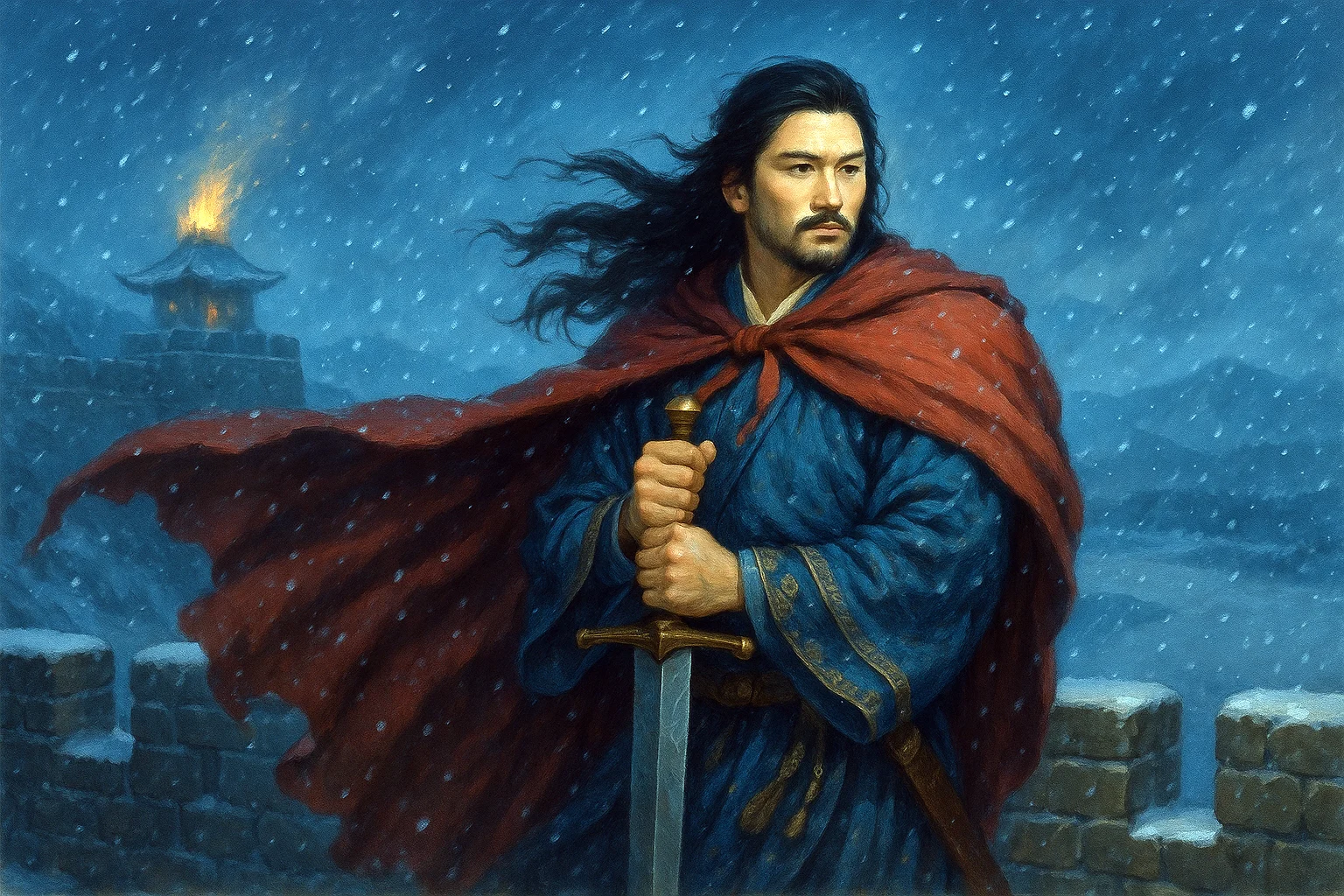
Cen Shen(岑参), 715 - 770 AD, was a native of Jingzhou, Hubei Province. He studied at Mt. Songshan when he was young, and later traveled to Beijing, Luoyang and Shuohe. Cen Shen was famous for his border poems, in which he wrote about the border scenery and the life of generals in a majestic and unrestrained manner, and together with Gao Shi, he was an outstanding representative of the border poetry school of the Sheng Tang Dynasty.


